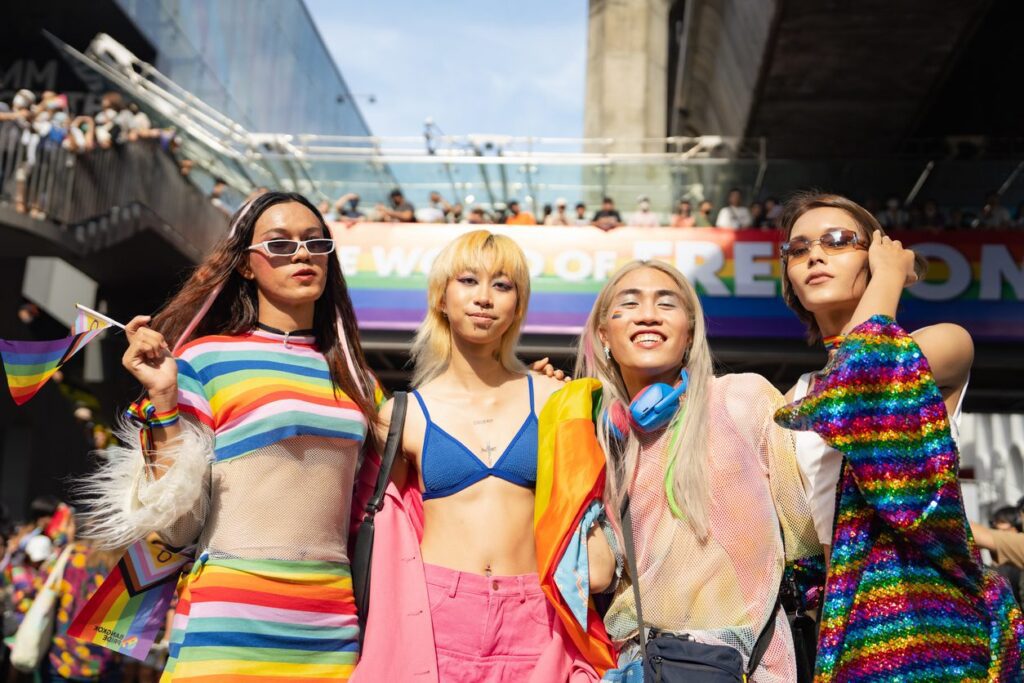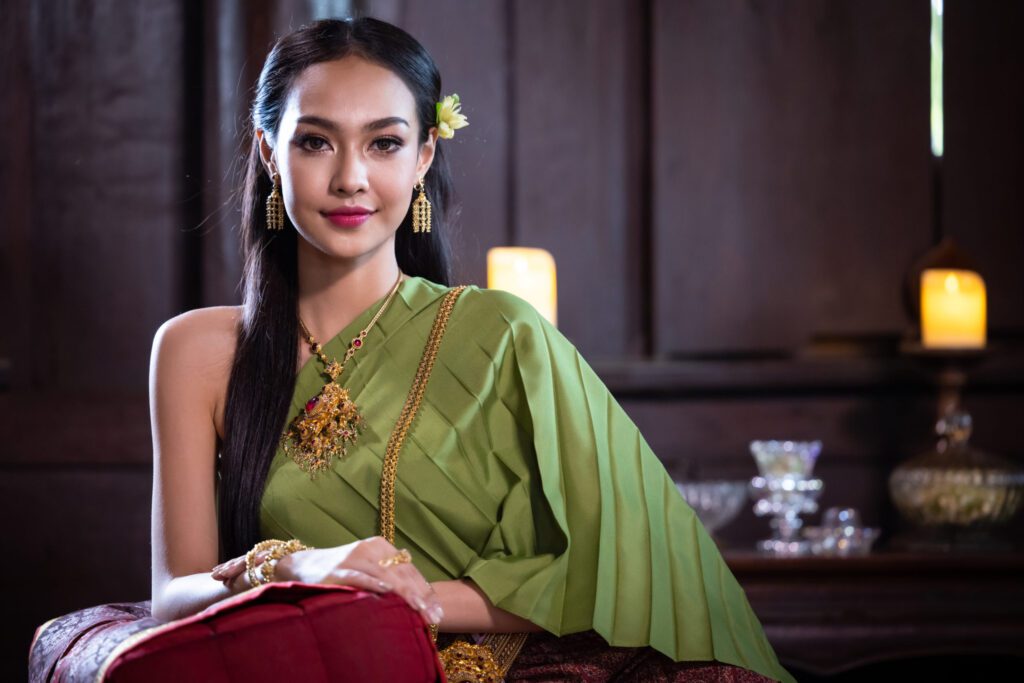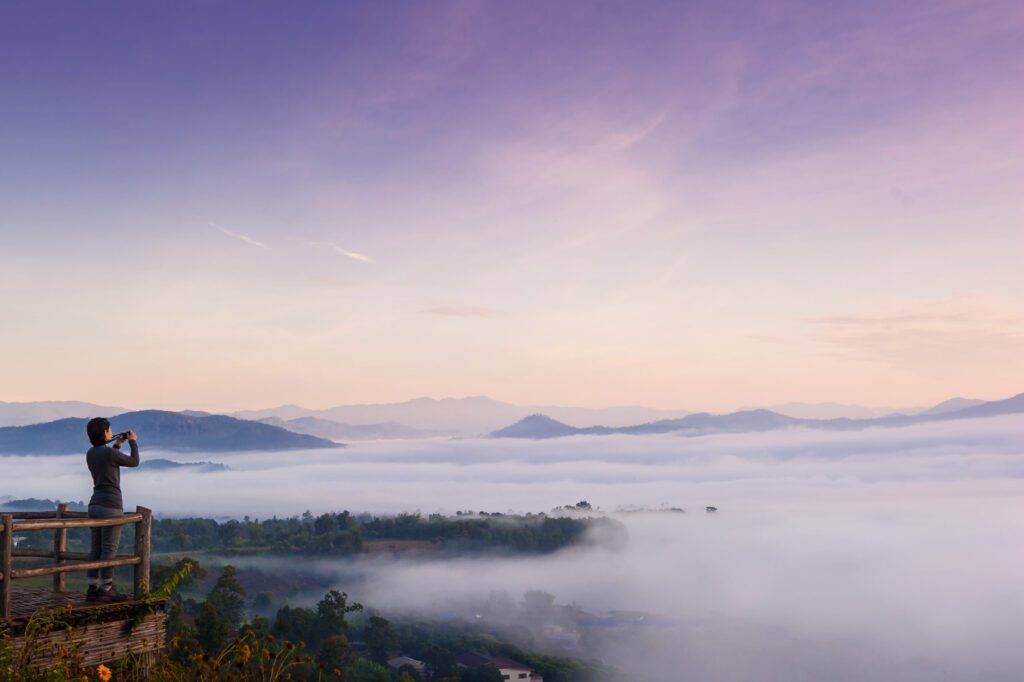a guide to Ubon Ratchathani
Off the beaten path in Thailand is Ubon Ratchathani, a riverside city on the banks of the Mun River. Upon arrival, you may find that you have Ubon all to yourself. Explore its natural attractions, temples, riverside cafes, and rustic markets, as you embark upon an experience you’ll remember for life.
The charm of Ubon lies in its laid-back calm that permeates throughout the area’s attractions.
Getting there
Several daily flights from Bangkok’s Don Mueang and Suvarnabhumi Airports take about an hour to cover the distance from the capital to Ubon Ratchathani Airport. Flat-rate taxis and tuk-tuks are available at the arrivals area, ready to whisk you to your hotel.
Buses from Bangkok leave from their terminal near Mo Chit BTS, taking 10 hours to cover the distance. Train services from Bangkok connect the capital to the Southern Isaan provincial capitals and the Ubon station can be found in the Warin Chamrap district. Songthaews and buses connect arriving tourists from either station to the city center.
The Candle Festival is Ubon Ratchathani’s most visited time of the year, so book your tickets far in advance if you plan to come in July.
Getting around
A songthaew network travels on fixed routes around Ubon Ratchathani. You can distinguish them by their colors and the number codes affixed to the front. A map and route guide can be picked up at the Tourism Authority of Thailand office in Ubon Ratchathani.
Things To Do in Ubon Ratchathani
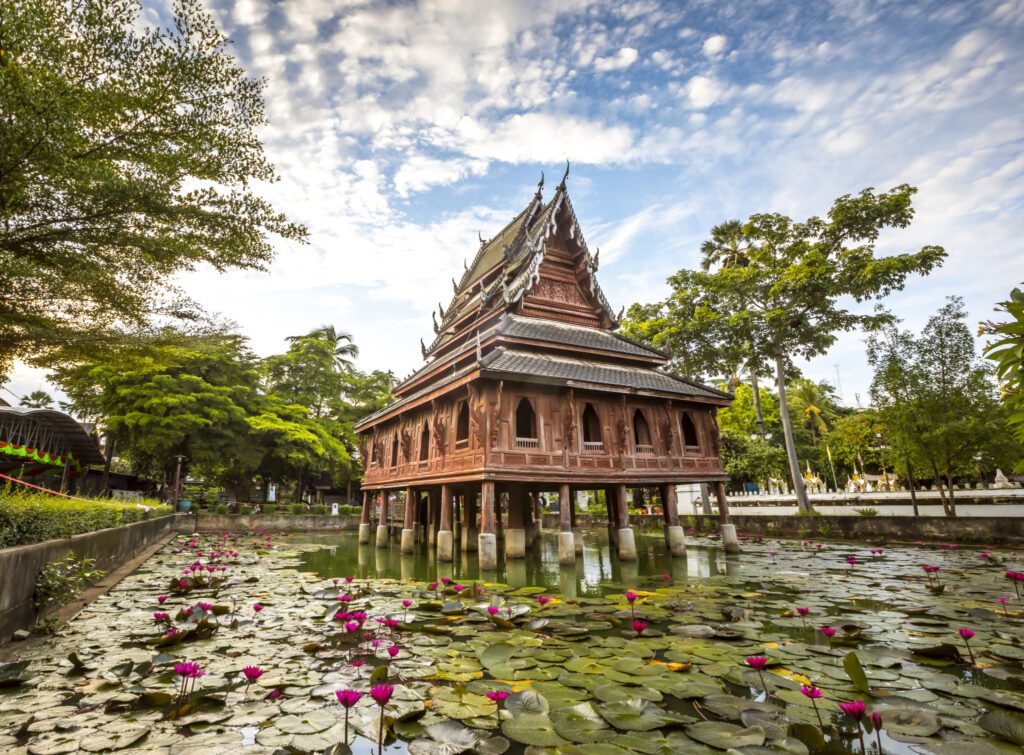
Any visit to Ubon should begin at Thung Si Muang Park, a compact square in the center of the city that connects visitors to several points of interest:
-The Candle sculpture in the center of the park, rising some 22 meters high from a boat adorned with a garuda (eagle) and naga (serpent).
-Ubon Ratchathani National Museum, south of the park, is a century-old building that was Ubon’s City Hall before its conversion into a showcase of all things beautiful about the province. It includes geology, city history, and local handicrafts.
-Wat Si Ubon Rattanaram, southwest of the park, is the city’s founding temple. It houses a Buddha image carved from a single topaz rock.
-Wat Thung Si Muang, east of the park, is best known for its wooden scripture hall (Ho Trai) built in the middle of the pond to protect the wood structure from termites.
From here, visitors can take a songthaew bus, tuk-tuk (an auto rickshaw) or samlor (a three wheeled bicycle with a cart for passengers) to the province’s key cultural stops, among them:
Talat Yai Morning Market – is a talat sod (wet market) that sells fresh meat and produce for the local community. Visit for the authentic sights and sounds of locals going about their day and for a cheap local meal.
Kham Pun – is a teak mansion housing a fabric museum, exposing tourists to the Isaan region’s best handmade crafts and their history. An adjoining cafe serves Thai-style cakes and coffee.
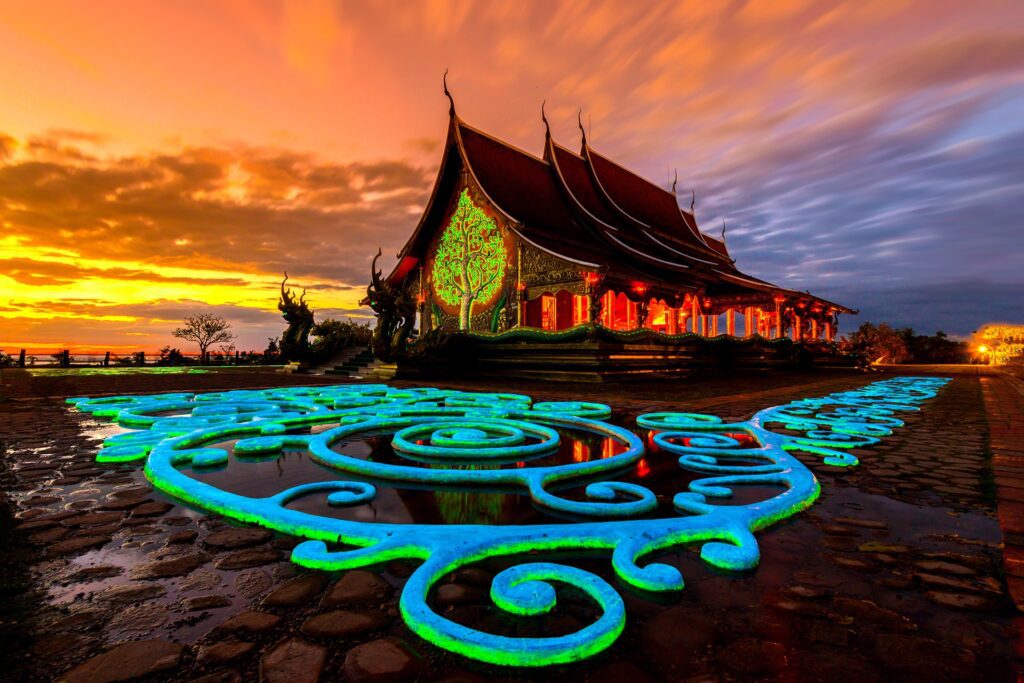
Wat Nong Pah Pong is a forest monastery founded by the late Ajahn Chah, one of Thailand’s most respected meditation masters. Pay your respects at the stupa and learn more about Chah in the museum dedicated to his memory.
Wat Sirindhorn Wararam’s southern wall bears a graceful ceramic-tile tree that glows in the dark after sunset.
Wat Tham Khuha Sawan, is home to Thailand’s largest gong and final resting place of a revered Buddhist monk.
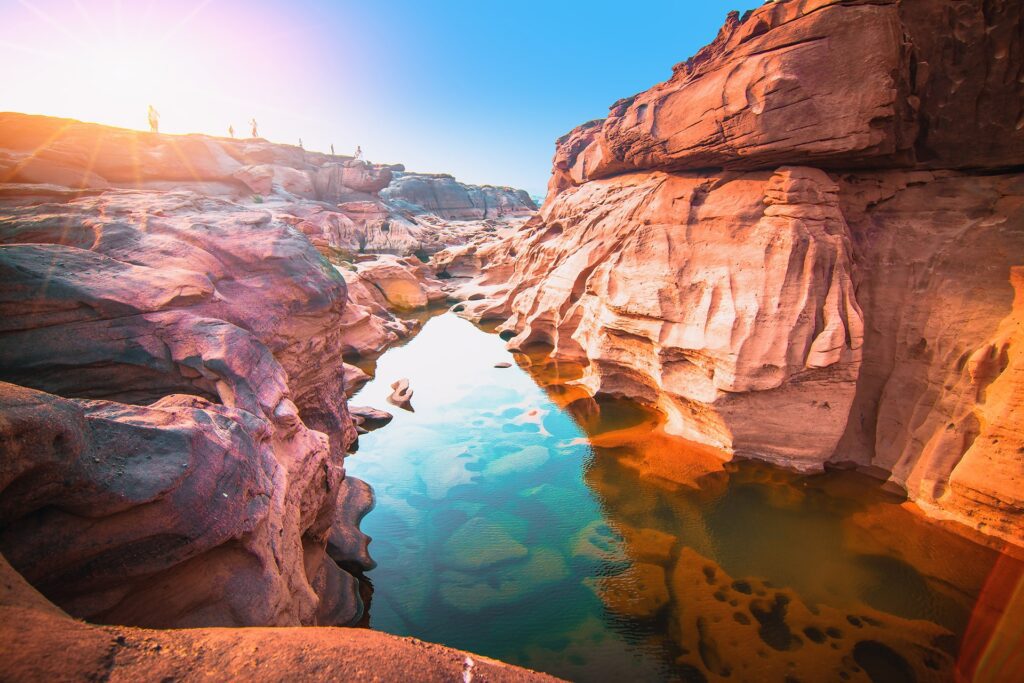
It may not look the part, but, alongside Udon Thani, Khorat, and Khon Kaen, Ubon Ratchathani is one of the Isaan Region’s “Big Four” cities. The capital city of Bangkok is some 630 km (395 mi) to the west of Ubon while the borders of both Cambodia and Laos are less than 100 km (65 mi) away.
The “Emerald Triangle” where the three countries meet has long been known for its untamed landscapes, with striking mountain ranges and verdant jungles run through with rivers. To see just how wild the Emerald Triangle’s terrain can be, visit the area’s most striking natural formations:
Phu Chong Na Yoi National Park covers some 680 sq. km at the eastern end of the Dângrêk Mountains (also known as the “carrying pole mountains”). Its signature sight, the Namtok Huai Luang waterfall, descends some 30 meters into a dazzlingly-blue pool with a white beach. Hiking trails throughout the park lead to rock gardens, streams, and mountaintop viewpoints.
Pha Taem National Park is as untamed as it gets: a 340 sq. km park at the most eastward point of mainland Thailand, covered in deciduous dipterocarp forest. This park is home to Thailand’s largest flower field and Cha Na Dai Cliff, a viewpoint gazing over the Mekong and Laos beyond it. Every morning it is the first point to see daylight in Thailand.
Certain caves in Pha Taem show signs of human habitation — specifically, prehistoric cave paintings that may be up to 4,000 years old.
Maenam Song Si is the point where the Mun River meets the Mekong, and the rivers blend. The Mekong’s reddish-brown current clashes with the Mun’s bluish waves.
In the dry season, the gorge of Sam Pan Boak reveals the beautiful consequences of erosion and time: a channel carved through sandstone that’s been called a smaller version of the Grand Canyon.
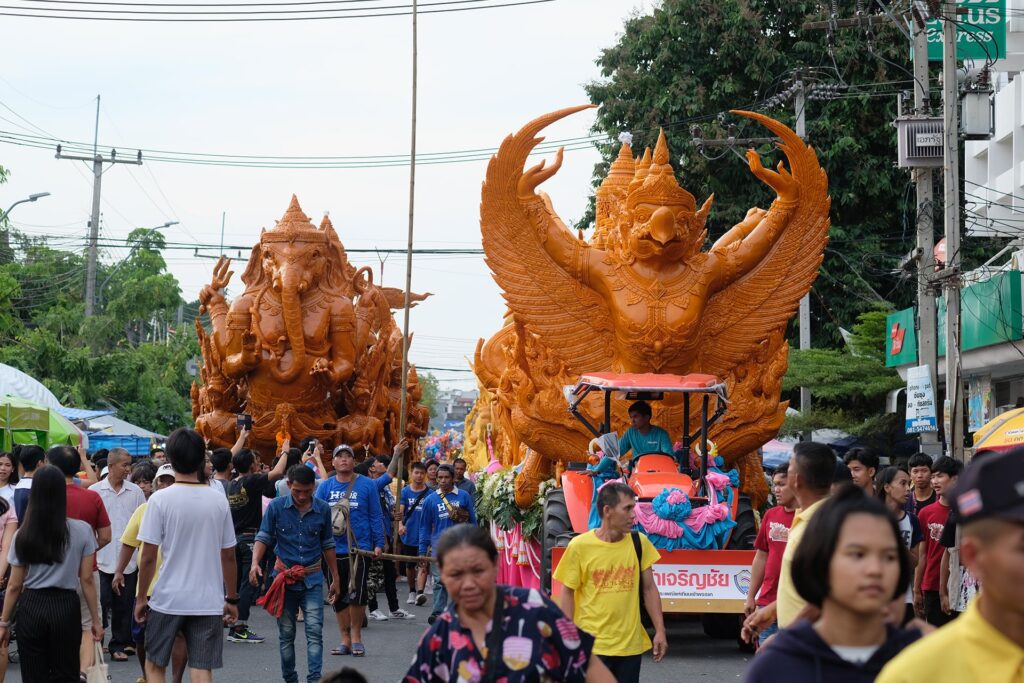
The beginning of Buddhist Lent — Khao Phansa, usually in late July — sees Ubon at its most festive.
The Candle Festival sees off Buddhist monks to their annual rainy-season retreat with parades featuring beeswax sculptures depicting scenes from Buddhist and Hindu lore. Tourists can see these candles being made at Wat Pholphaen, Wat Thungsrimuang, and Wat Sripradoo. Then, they can watch the parade start from Wat Si Ubon Rattanaram and end at Thung Sri Muang Park.
During the Candle Festival, the Thai-style mansion complex of Ban Khampun opens to the public with cultural performances, silk-weaving demonstrations, and other events gracing the beautiful mansion grounds and interiors.
Food in Ubon Ratchathani
Ubon Ratchathani is also famous for its food. Known as Isaan cuisine, there are many famous dishes that are common in Ubon Ratchathani. You may have heard of larb, a dish made of a minced protein such as chicken, pork, duck, or beef, mixed with vegetables such as shallots and onions, and seasoned with chili and lime. Another popular dish, the Isaan sausage is a flavorful fermented pork sausage.
In the winter months, it is common to find khao gee, sticky rice that is shaped into balls or circles and then basted in egg and salt and double grilled. The dish is said to be perfect for the cooler seasons because it will warm you up as you enjoy it.
Another must-try is the mok. Mok is made with curry and lemon basil seasoned meat or vegetables that are cooked in a banana leaf by either steaming or grilling. What makes this dish so unique is that it can be cooked with ant larva, fish, tadpoles, or roe as its main ingredient.
